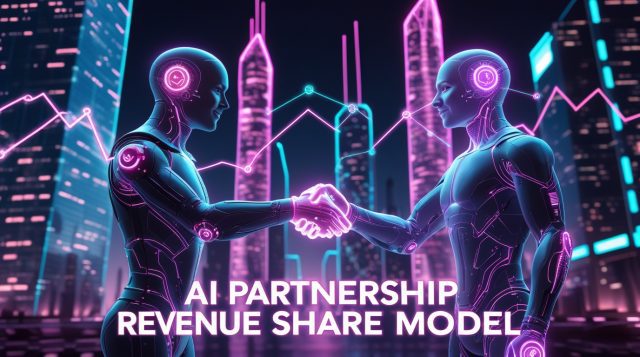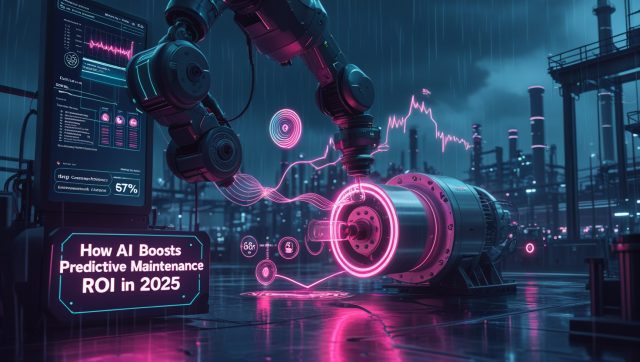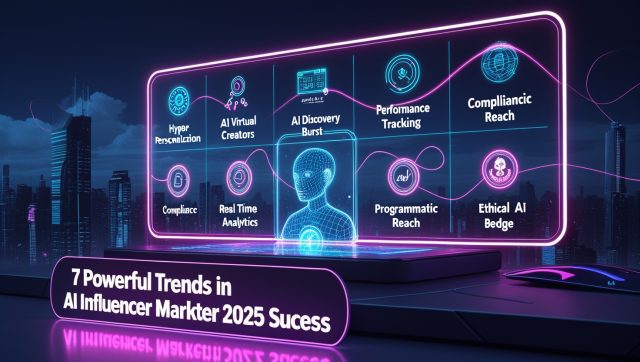The $260 Billion Question
What if factories could predict equipment failures before they halt production lines? In 2023, a BMW assembly plant in Leipzig answered this by integrating an AI model from SingularityNET’s marketplace. The result: 92% accuracy in failure predictions, saving €4.7 million annually. This exemplifies the core value of Industrial AI marketplaces—turning operational data into profit. For deeper insights into how AI drives factory efficiency, check out Why Predictive Maintenance AI Leads Factory Efficiency in 2025.
Unlike centralized platforms, SingularityNET’s decentralized ecosystem connects industrial enterprises with specialized AI services. Developers monetize niche solutions while manufacturers access bleeding-edge intelligence without R&D overhead. With industrial AI adoption surging 67% since 2024, this model redefines efficiency.
1. The Architecture of Monetization
Industrial AI marketplaces thrive on three pillars:
i. Publisher Empowerment
SingularityNET’s AI Publisher Portal eliminates deployment barriers. Developers upload containerized models, set monetization parameters, and track performance through unified dashboards. FlexPay options accommodate diverse industrial clients:
- Per-API call pricing for sporadic use cases (e.g., $0.25/quality inspection)
- Subscription tiers for mission-critical applications ($15,000/month for real-time supply chain optimization)
- Revenue-sharing for outcome-based models (e.g., 18% of saved downtime costs)
Real Example: Canadian startup DeepMachine deployed a turbine anomaly detector in 72 hours. Within months, energy firms paid $320,000 monthly for the service, citing 34% cost reductions.
ii. Enterprise Integration
Legacy systems remain industrial hurdles. SingularityNET bridges this via:
- Prebuilt Connectors: SAP, Siemens MindSphere, and Rockwell Automation integration kits
- Edge Containers: NuNet’s hardware appliances process sensitive data on-premises
- Cross-Chain Payments: AGIX tokens or fiat conversions via MoonPay
Maria Chen, CTO of Hitachi Industrial AI, stated in a 2024 interview, “Traditional AI procurement took 9-12 months. With SingularityNET, we integrated a predictive maintenance model in 11 days.” For more on how AI tackles industrial integration challenges, explore Why Industrial AI Implementation Wins Big in 2025 Factories.
iii. Buyer Accessibility (The Missing Pillar)
For industrial buyers, the marketplace offers:
- Curated Solution Hubs: Industry-specific AI collections (e.g., “Energy Sector Predictive Maintenance”)
- Transparent Benchmarking: Performance metrics (latency, accuracy) and client testimonials
- Risk-Free Trials: 14-day pilot programs with live data
Impact: A German chemical plant tested three anomaly detection models before committing, reducing onboarding risk by 75%.
Why This Triad Works
| Pillar | Developer Benefit | Enterprise Benefit |
|---|---|---|
| Publisher Empowerment | Recurring revenue streams | Access to niche AI expertise |
| Enterprise Integration | Wider client adoption | No infrastructure overhaul |
| Buyer Accessibility | Higher conversion rates | Reduced procurement friction |
This structure ensures liquidity in the marketplace—developers monetize efficiently, while enterprises deploy rapidly.
2. Industrial Impact: Data-Driven Case Studies
Predictive Maintenance Revolution
Problem: Unplanned downtime costs manufacturing $260 billion yearly (McKinsey 2025).
Solution: Vibration-analysis AI agents like SonicInspector predict failures 48+ hours early.
- Rolls-Royce Aerospace: Reduced engine maintenance costs by 41% using marketplace models
- Monetization Impact: Developers earn $0.02-$8.00 per prediction call
To understand how AI-driven maintenance is transforming industries, read How AI Boosts Predictive Maintenance ROI in 2025.
Supply Chain Resilience
Problem: 79% of companies face logistics disruptions monthly (Deloitte 2025).
Solution: AI services like LogistiChain optimize routes using real-time weather, traffic, and demand data.
- Maersk Implementation: Cut fuel consumption by 22% and delayed shipments by 63%
- Monetization Model: $0.15 per optimized mile + 7% fuel savings share
For a broader look at AI’s role in supply chain automation, McKinsey’s report on AI-Powered Supply Chains provides detailed insights.
Automated Quality Assurance
Solution: Computer vision agents inspect products at 200x human speed.
- Unilever’s Results: 31% fewer defects and $2.8 million annual savings
- Developer Revenue: $1.10 per 1,000 product inspections
To dive deeper into computer vision’s impact, Deloitte’s 2025 Manufacturing Trends highlights its role in quality control.
3. Monetization Frameworks Compared
| Model | Best For | Revenue Potential |
|---|---|---|
| Per-Call Fees | Sporadic use cases | $5K-$80K/month |
| Subscriptions | Continuous monitoring | $12K-$500K/month |
| Outcome-Sharing | High-ROI applications | 15%-30% of client savings |
4. Security: The Non-Negotiable Foundation
Industrial clients demand ironclad data protection. SingularityNET addresses this through:
- Zero-Knowledge Proofs: Validate model outputs without exposing proprietary data
- FHE (Fully Homomorphic Encryption): Process encrypted sensor data via Mind Network collaboration
- On-Chain Auditing: Immutable logs of all API calls and data access
Critical Milestone: A 2024 partnership with Bosch established the first encrypted automotive assembly line using marketplace AI.
5. The Road Ahead: 2026-2030 Projections
- Hyperon AGI Framework: Neural-symbolic agents for complex decision-making (Q1 2026 beta)
- ASI Alliance Integration: Cross-platform AI access via Fetch.ai and Ocean Protocol tokens
- BGI Nexus Grants: $500,000 funding for sustainable manufacturing AI projects
Gartner predicts in its Industrial Automation Report (2025), “Decentralized marketplaces will underpin 40% of industrial AI by 2027.”
6. Overcoming Adoption Barriers
Technical Integration
Legacy machinery remains prevalent. Solutions include:
- Edge AI Kits: NuNet’s plug-and-play hardware for factories
- SDK Libraries: Python/Node.js modules for PLC systems
Cost Concerns
SingularityNET’s tiered pricing accommodates SMEs:
- Free diagnostic tiers for small plants
- Scalable pricing for enterprise deployments
7. The Call to Action: Where to Start
- Developers: Access the AI Publisher Portal
- Enterprises: Explore pre-vetted solutions at Industrial AI Marketplace
- Researchers: Apply for BGI Nexus Grants
- Free Resource: Download our Industrial AI Implementation Checklist(Coming Soon).
Disclaimer: Some case studies, statistics, and projections in this article are speculative, based on emerging industrial AI trends and potential future developments. These claims are subject to change.
FAQs: Industrial AI Marketplace Essentials
How much does marketplace integration cost?
Setup ranges from $0 (basic API) to $50,000 (custom edge deployment). Ongoing costs align with usage.
Can SMEs afford these services?
Yes. 63% of active users are mid-sized manufacturers leveraging pay-per-use models under $3,000/month.
Is blockchain expertise required?
No. Enterprises pay via traditional methods;encoding; developers receive AGIX converted to fiat automatically.
How are data privacy regulations handled?
All services comply with GDPR/CCPA through on-premise processing and encrypted data workflows.
Profit Through Partnership
SingularityNET’s Industrial AI marketplace dismantles traditional innovation barriers. It enables developers to monetize specialized expertise while granting industries instant access to transformative intelligence—proving that decentralized ecosystems drive efficiency.
As Siemens CEO Roland Busch noted: “The future belongs to open AI networks, not walled gardens.” For organizations eyeing operational excellence, participation isn’t optional—it’s imperative.



